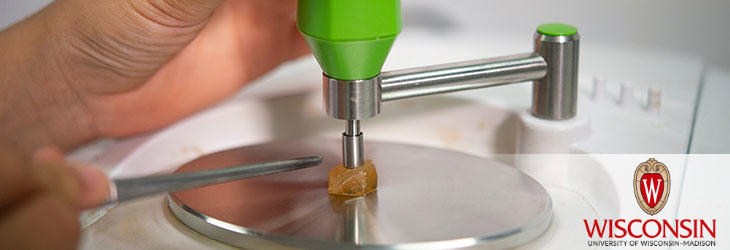Research Tools

Accurate Determination of Metabolite Concentrations in Cell Extracts or Biological Fluids
WARF: P07362US
Inventors: John Markley, Ian Lewis, William Westler, Qiu Cui, Gabriel Cornilescu, Marco Tonelli
The Wisconsin Alumni Research Foundation (WARF) is seeking commercial partners interested in developing a simple experimental protocol and device for identifying and measuring concentrations of metabolites in complex solutions.
Overview
Metabolomics, or the systematic study of all metabolites in an organism, is one of the fastest growing areas of scientific research. Nuclear magnetic resonance (NMR) spectroscopy is one tool used to analyze metabolites. Unlike other detection methods, the metabolites do not need to be separated for NMR, making the sample recoverable for further testing.
However, traditional one dimensional (1-D) NMR cannot identify compounds in complex mixtures of biological fluids and tissue extracts that may contain hundreds of overlapping peaks. This method is only accurate to within 16 percent in a simple mixture of known compounds.
Two dimensional (2-D) 1H-13C NMR is a well-established technique for reducing peak overlap. But it is generally used for qualitative, rather than quantitative, analyses of metabolites. It is difficult to translate multidimensional peak intensities into metabolite concentrations, and 2-D spectra take more time to collect than 1-D spectra, making it impractical for metabolomics studies with hundreds of samples.
However, traditional one dimensional (1-D) NMR cannot identify compounds in complex mixtures of biological fluids and tissue extracts that may contain hundreds of overlapping peaks. This method is only accurate to within 16 percent in a simple mixture of known compounds.
Two dimensional (2-D) 1H-13C NMR is a well-established technique for reducing peak overlap. But it is generally used for qualitative, rather than quantitative, analyses of metabolites. It is difficult to translate multidimensional peak intensities into metabolite concentrations, and 2-D spectra take more time to collect than 1-D spectra, making it impractical for metabolomics studies with hundreds of samples.
The Invention
UW-Madison researchers have developed a simple experimental protocol and device for identifying and measuring concentrations of metabolites in complex solutions from 2-D 1H-13C NMR spectra. This protocol may lead to a faster, more consistent and accurate method for generating more complete metabolite concentration information.
The intensity peaks from the NMR data are used to identify metabolites in advance. Then a processor calculates the concentration of each metabolite compound, based on the concentration equation associated with the compound and the intensity value from the NMR data.
The intensity peaks from the NMR data are used to identify metabolites in advance. Then a processor calculates the concentration of each metabolite compound, based on the concentration equation associated with the compound and the intensity value from the NMR data.
Applications
- Identifying and quantifying most NMR observable metabolites
Key Benefits
- Reduces acquisition times to as little as eight minutes per spectrum
- Effective for identifying compounds and measuring molar concentrations of metabolites to within 2.7 percent, in contrast to traditional 1-D NMR
- Very close to a commercial product—requires little further development work
Stage of Development
This protocol was successfully tested using a set of 30 synthetic mixtures containing varying concentrations of 26 small molecule metabolites that mimic extracts from Arabidopsis thaliana.
Additional Information
For More Information About the Inventors
Tech Fields
For current licensing status, please contact Jennifer Gottwald at [javascript protected email address] or 608-960-9854